
I continue to work hard on the Scriptshadow Dialogue Book. One of the most time-consuming parts of the process has been cross-checking all the tips against my favorite movies.
I’ll watch a favorite movie and, with each scene, make sure that the dialogue being spoken doesn’t contradict anything I’m saying in my book. For the most part, it’s gone great. Everything that I’ve watched lines up perfectly with the tips I’ve written.
And then I read Sideways.
For those of you who don’t know, Sideways is a movie that came out in 2005 about two friends in their 40s, eternal pessimist Miles and sex addict, Jack, who go on a wine-tasting weekend the week before Jack gets married. The screenplay, written by Alexander Payne and Jim Taylor, won the Academy Award for best adaptation.
In order to understand why this script threw a wrench into my previously perfect book, you must first understand the principle tenets I’m building the book around. Namely that every dialogue scene needs to be motivated by a character who wants something.
Typically, that something is a goal – such as needing advice or needing to confess – or the need to solve a problem – such as a car breaks down on the side of a deserted road; what do you do? But, mainly, there needs to be purpose in the scene, and that purpose needs to be driven by the characters.
Then I read Sideways and in the first half of the screenplay, there were, at most, three scenes that abided by this rule. Characters were speaking to speak. Sometimes just to fill up time. And I’m thinking… wait a minute here. This goes against everything I believe.
Here’s a scene from early in the script, when Miles comes to pick up Jack. Miles is thrust into a room with Jack, his fiancé, and his fiancé’s family. Notice how there’s no one here with any real goal (the cake tasting gets them in here but it’s not a true goal since it’s inconsequential). Nobody really wants to talk to each other. They’re just talking cause they’re stuck in the same room for a moment.

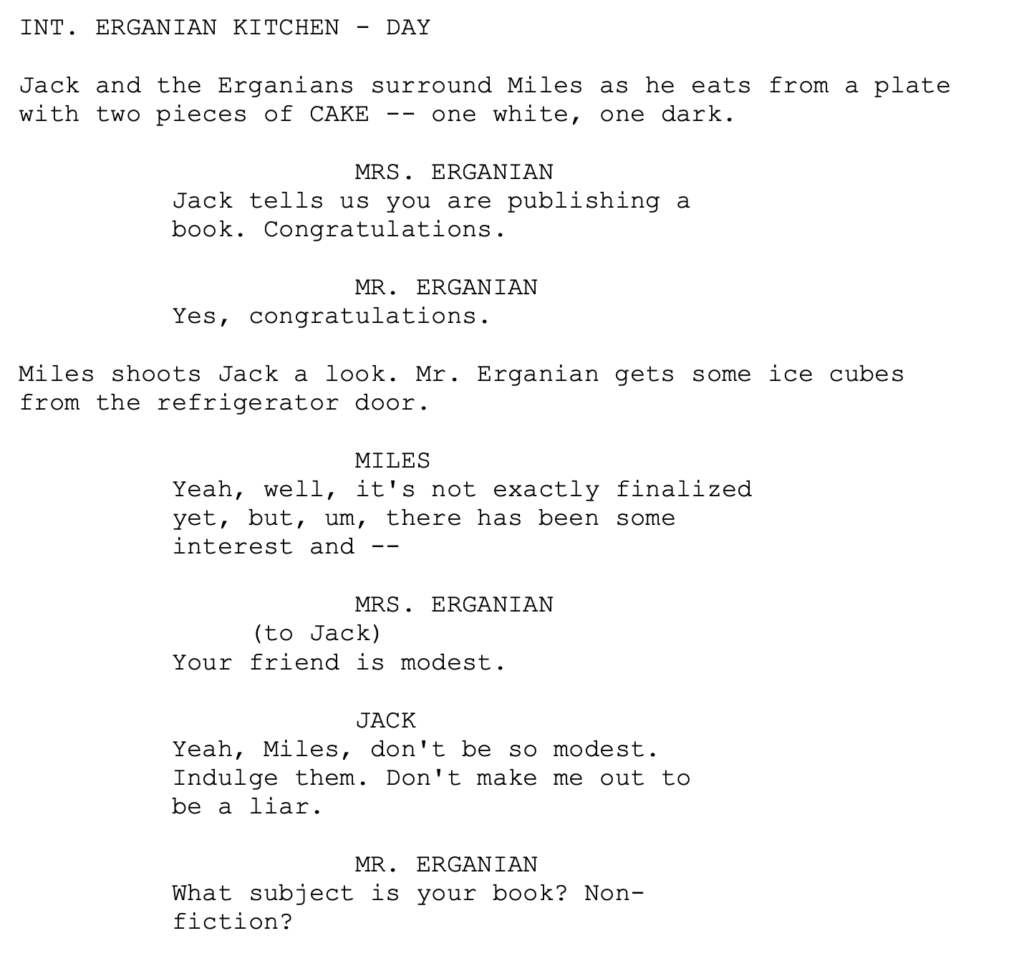
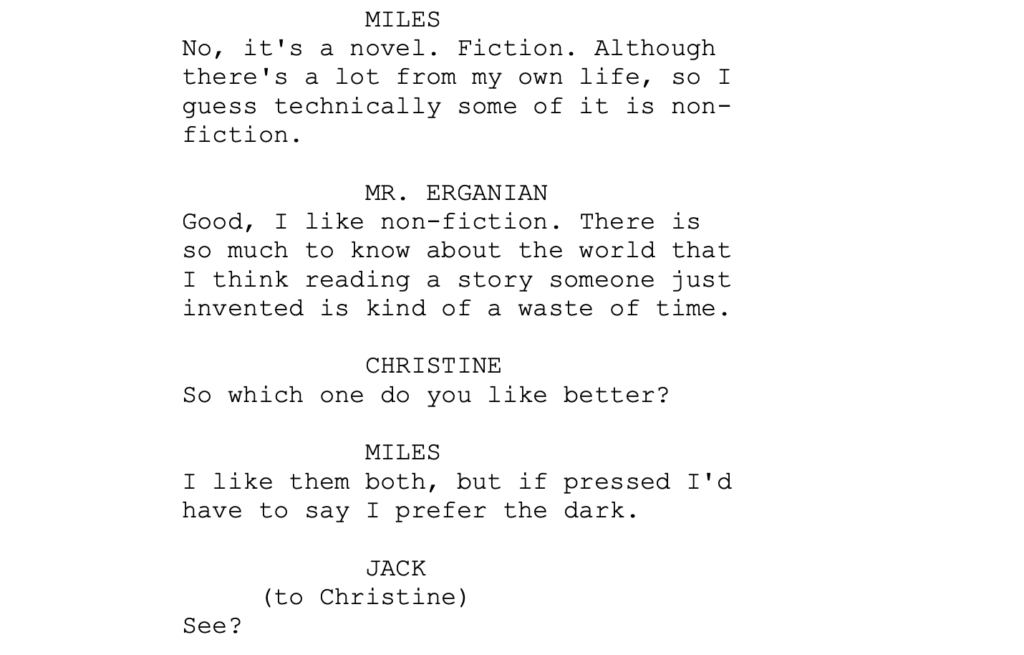
Then here’s another scene where Miles and Jack are having dinner with two women they recently met. Note how nobody really has a goal here. Sure, Jack wants to get laid and Miles likes Maya. But nobody has a specific goal in the scene. It’s basically just chit-chat.
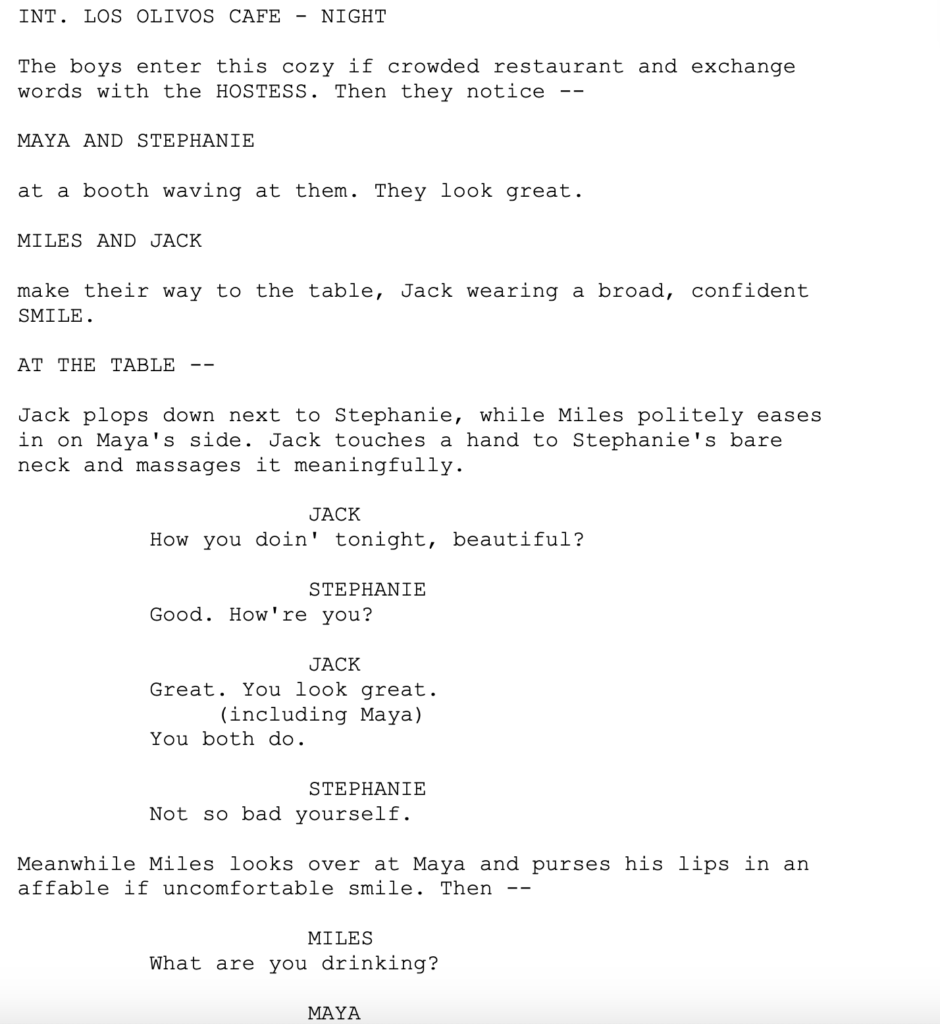
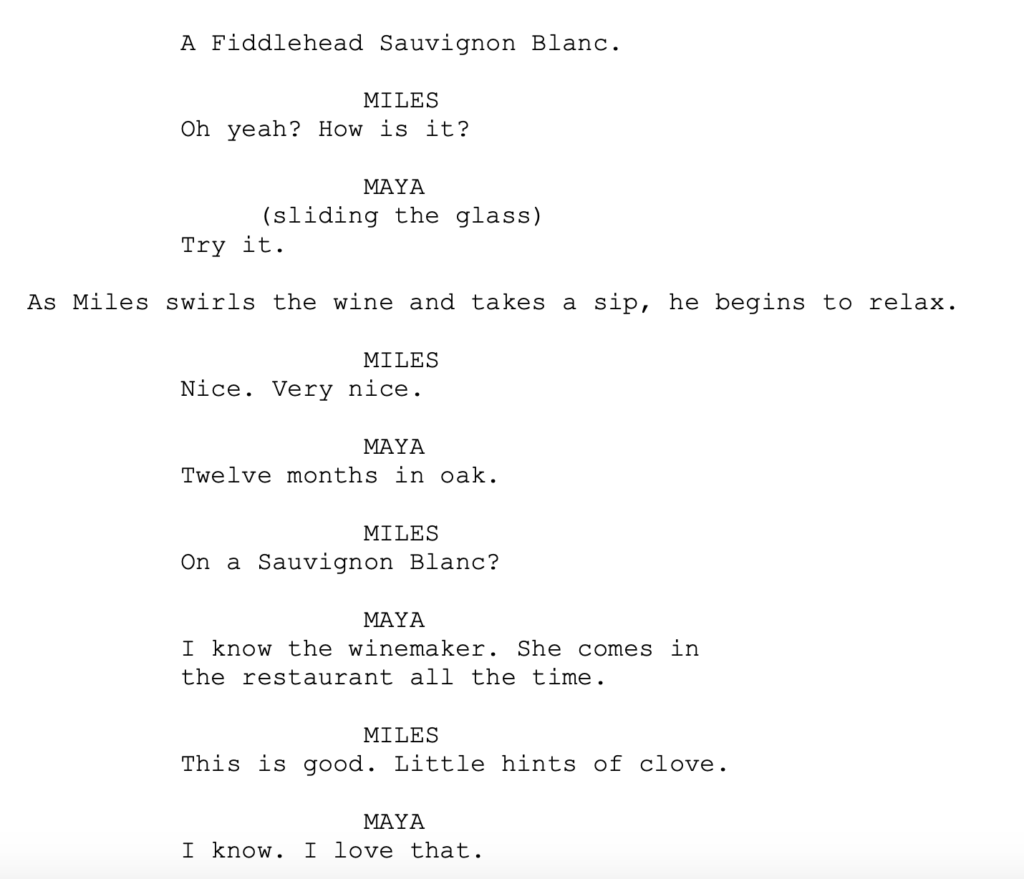
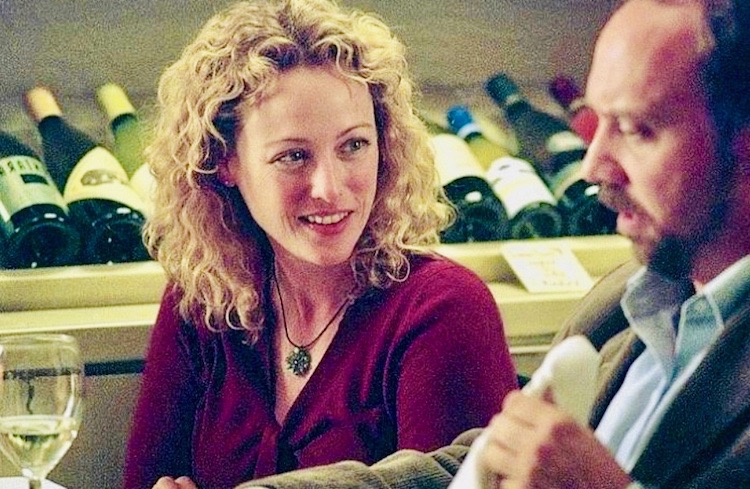
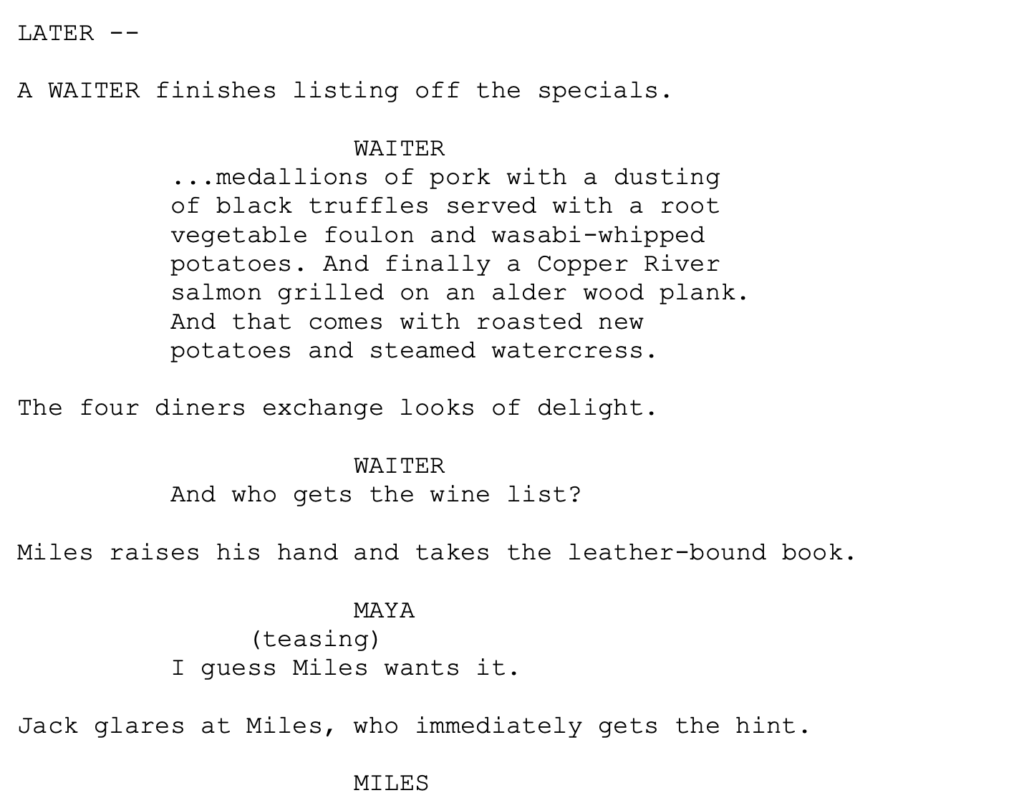
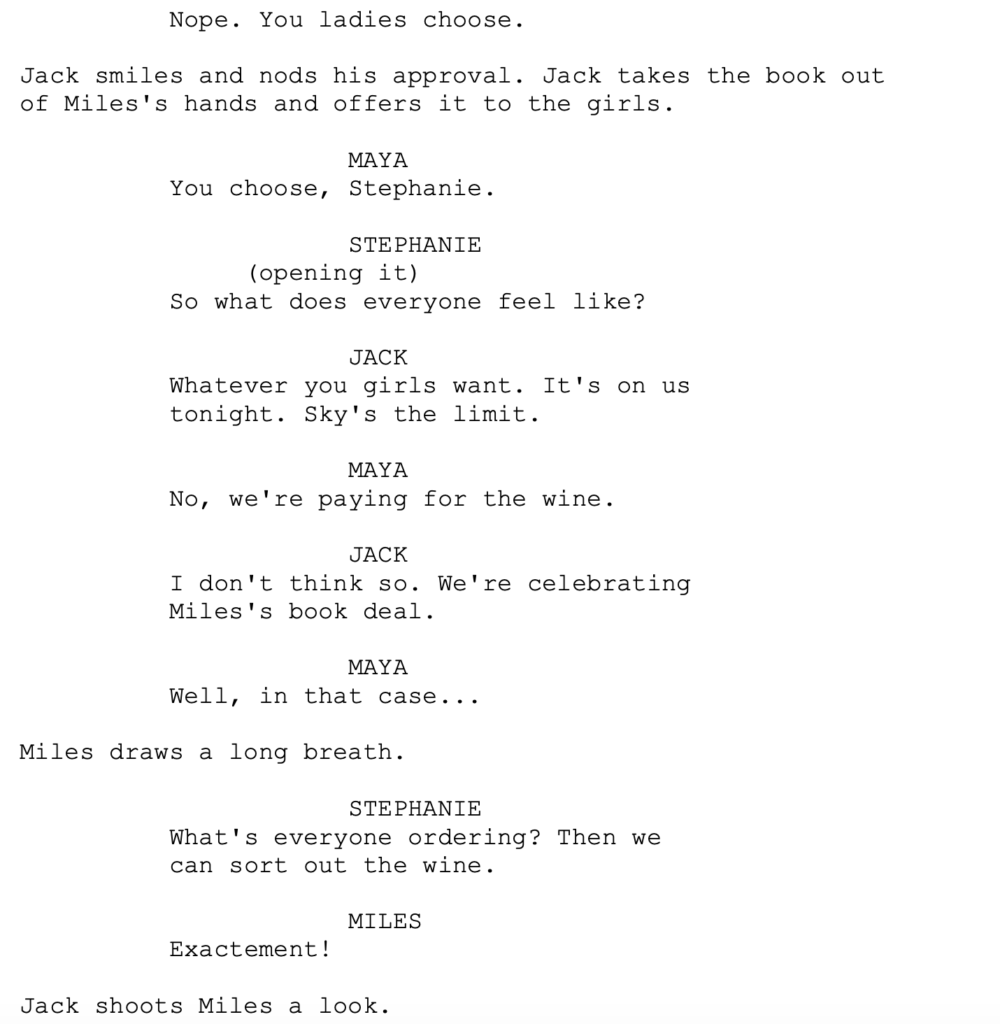
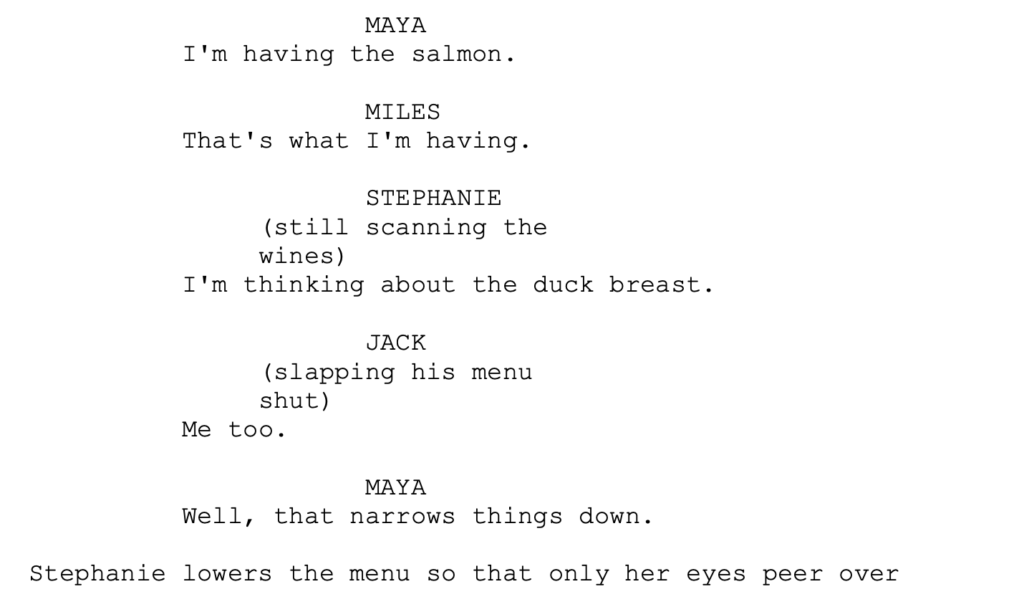
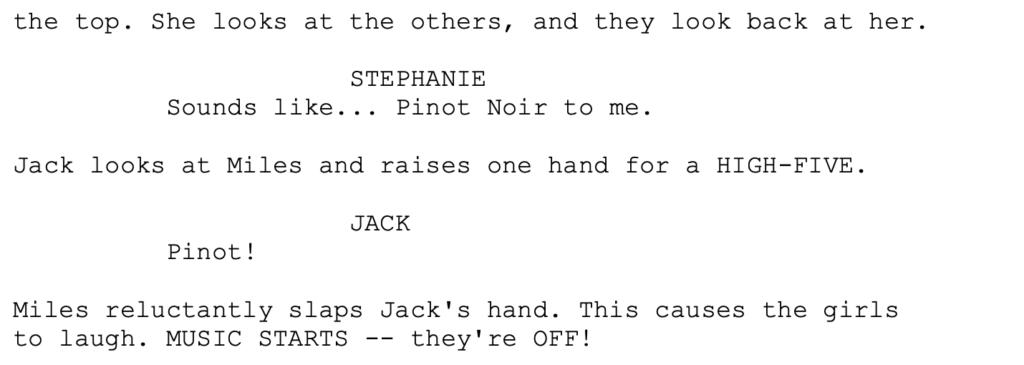
Some might say, “Well, the goal it to decide on what they’re going to eat.” Yeah but that’s not a real scene goal. Ordering in movies is inconsequential, as is the case here as well. Does it matter what they order? No. So it’s chit-chat. It’s the stuff you usually leave out in screenplays.
Now, to be fair, Sideways is a high-brow movie written for well-educated folks 40+ years old who live on the Upper West Side or Beverly Hills. And it’s an indie film. It’s not meant to pull you in and bombard you with drama every five minutes like a big-budget Hollywood film. So the rules are a little different.
With that said, the dialogue does work. It’s fun listening to these friends banter back and forth for two hours. So what’s going on? How is that happening?
There were a few things I learned.
First, I came to realize that the scene goals in indie films can be softer (or more subtle) than in mainstream films. They don’t need to be as big of a deal. So while in a Hollywood movie, the goal of a conversation might be to figure out how to defeat Vulture before he destroys the city, in an indie movie, the goal might simply be to teach another character how to taste wine.
I do think soft character goals in scenes are dangerous. They’re more likely to result in boring conversations. For example, go write your own scene where one character teaches another character how to taste wine. Just how entertaining can you make that dialogue? Especially when nothing’s at stake in the scene.
But a skilled dialogue writer has tools in their toolbox that you don’t yet have and, therefore, know how to navigate these softer scenes to still make the dialogue work.
That leads me to the second thing I discovered, which is that Payne did something long before any of his scenes were written that ensured the dialogue would be entertaining. He made Miles and Jack the most opposite of opposites ever. Miles is a pessimist. Miles’ marriage fell apart. Miles’ book is never getting published. He’s a bitter shell of a man. Jack, meanwhile, sees possibility in everything. He’s optimistic. He’s about to get married. He loves life and loves meeting people. They are polar opposites.
This ensures that even if Payne never once comes up with a scene that has a strong character goal and actual consequences, that the scene is still going to be entertaining on some level due to the fact that these two will never see eye-to-eye. Every conversation they have is going to have a push and pull to it.
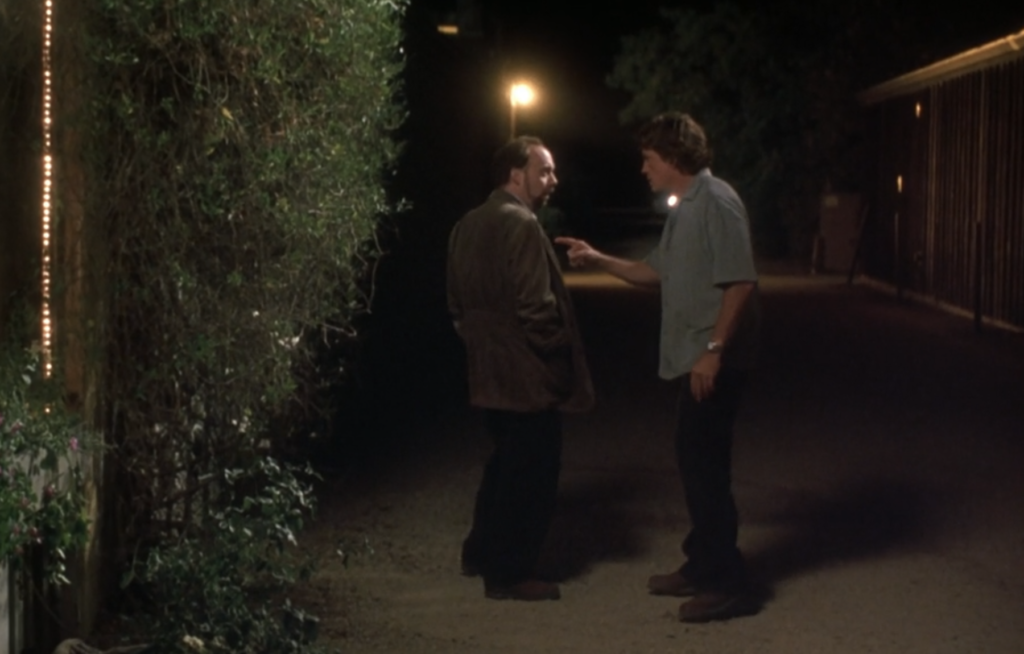
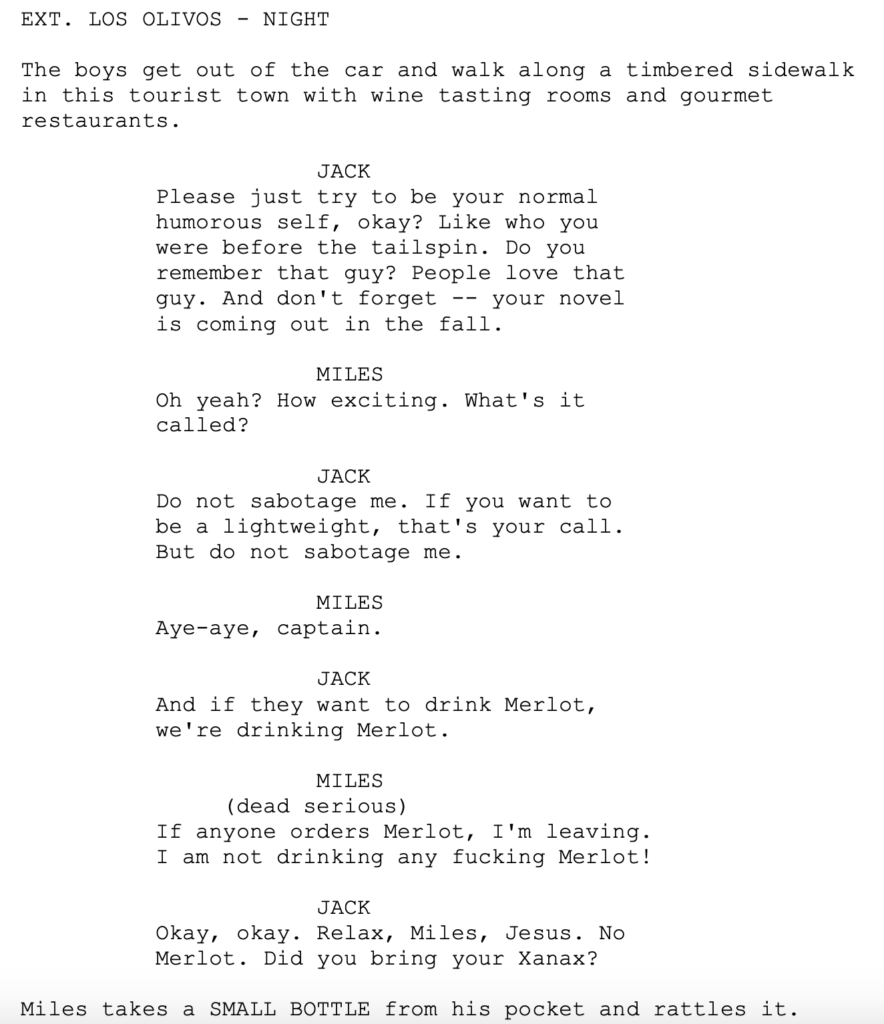
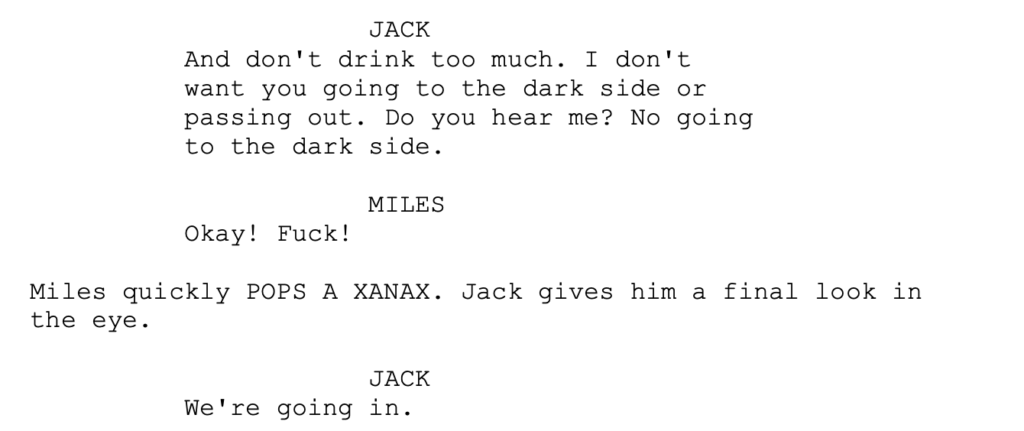
One of the key tenets of my book is, “Conflict solves all.” Because, if all else fails and you’re not doing many of the “proper” things needed to make your dialogue work, conflict can save you because when two people aren’t on the same page, there’s at least going to be some push and pull in the scene that will generate drama. And that’s what Payne so wisely does here. He bakes conflict into the Miles-Jack relationship from the start to ensure that, even when the plot isn’t humming, the conversations will still be entertaining.
Another thing I learned is that a character goal can be extended out beyond the immediate scene. So, in that scene above where the four characters are having dinner, Jack’s ultimate goal is to bed Stephanie. Originally, I was under the impression that dialogue goals needed to be scene specific. But, in this case, the goal is going to take several scenes and that’s okay. This is just the first of those scenes. Therefore Jack does, technically, have a goal. It’s just softer. It’s to establish sexual chemistry in order to get laid later on.
Finally, I learned that there are actually scenarios where nobody having a goal helps the dialogue. In the first scene that I posted, Miles doesn’t want to be talking to Jack’s in-laws. Jack’s in-laws don’t necessarily want to be talking to Miles. I guess they might be a little curious about him but they seem more focused on being polite than anything.
But that’s the reason the scene works. Because dialogue can be fun under awkward circumstances. The fact that nobody actually wants to speak is what makes the speaking fun. Cause we’ve all been in those situations. We’re stuck in a conversation we don’t want to be in and we just try and survive it. The desperate attempts to survive the conversation, wondering when the misery will be over, are what make it funny.
The more I study dialogue, the more complex I realize it is. But it’s really fun to keep learning this stuff and I can’t wait to share the book with you guys.
Also, a new newsletter is hitting your Inboxes this weekend! I’ll be reviewing a big-bugdget screenplay written by two of the biggest sci-fi screenwriters in Hollywood. I never knew these two teamed up on a script so I’m really excited to read it. So if you’re not already on the list, e-mail me at carsonreeves1@gmail.com to get on!
GET $100 OFF A SCRIPTSHADOW SCREENPLAY CONSULTATION! – I’ve read over 10,000 scripts. Done over 1000 consultations. I am the guy who can figure out the issues hampering your script AND HELP YOU FIX THEM so you can start doing better in contests, start getting more responses from queries, and start actually getting jobs in the industry! I have a 4 page notes package or a more detailed 8 page option designed to improve every aspect of your script, from your plot to your characters to your dialogue. I also give feedback on loglines (just $25!), outlines, synopses, first acts, or any aspect of screenwriting you need help with. If you’re interested, e-mail me at carsonreeves1@gmail.com and let’s set something up!

